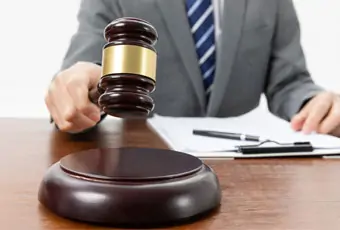Charlotte Chain Reaction Accident Lawyer
Charlotte Chain Reaction Accident Attorney
Chain reaction accidents primarily result when a series of rear-end collisions occur by three or more drivers. In these accidents, usually the second vehicle is following too closely to the first and crashes into it. As a result, the third and fourth vehicles, which may also have been following too closely, may crash into the others. “Pile-ups” as some call these accidents, are some of the deadliest car accidents.
Chain reaction accidents involve many different parties and it may be challenging to determine who is at fault. You will likely have to deal with back-and-forth negotiations between insurance companies, the other parties, and their lawyers. In such situations, having a Charlotte car accident lawyer can be invaluable to help navigate the complexities and ensure you receive the compensation you deserve.
Establishing Who Was at Fault
If you file a claim against one or some of the other motorists, you will need to prove that they were liable. Establishing the negligence of each party requires determining which driver’s carelessness was the cause of the accident. If more than one driver is responsible, then each driver will have a share in the liability. Consulting with a Charlotte personal injury lawyer can help you navigate this complex process and build a strong case.
The law in North Carolina requires that motorists maintain a safe following distance from the vehicle in front of them. N.C.G.S. § 20-152 mandates that “the driver of a motor vehicle shall not follow another vehicle more closely than is reasonable and prudent, having due regard for the speed of such vehicles and the traffic upon and the condition of the highway.” South Carolina follows a similar traffic law.
Many states recommend drivers to follow the “three second rule” to prevent following too closely. The three second rule establishes that you should choose a stationary object on the road, such a road sign. When the vehicle ahead of you passes it, three seconds must pass before your vehicle reaches that same object. If you reach this object before three seconds, this means that you are following too closely. A driver who fails to follow the three second rule and rear ends the other vehicle will almost always be at fault.
Road conditions can be unpredictable and drivers can be easily distracted. Depending on the circumstances, a driver’s reaction time to a red light may vary from less than one second to several seconds. The reaction time can be affected by a number of factors including lack of sleep, distracted driving, whether you have had anything to drink, and the conditions such as fog that obscures your vision.
If any of these factors are present, a driver should add an extra two or more seconds to the three second rule. Road conditions can change in the blink of an eye. A motorist may be driving on an obscure and foggy highway and without warning, he or she may be forced to brake quickly at the sight of a vehicle. In these types of cases, even if you follow the law and allow yourself plenty of space between you and the next car, you cannot guarantee that other drivers will do the same.
Questions or Concerns About Your Case?
If you have been a victim of a chain reaction accident and have suffered serious injuries, you should seek a lawyer to help with your case. Our lawyer, Brian Steed Tatum, has experience dealing with these types of crashes in North Carolina and South Carolina. At the Tatum Law Firm, we understand you need compensation fast. We understand that being involved in a car accident can be an emotional experience for you and your loved ones. Let us handle the work while you focus on getting better. For a free initial consultation, please contact us at (704) 307-4197.






